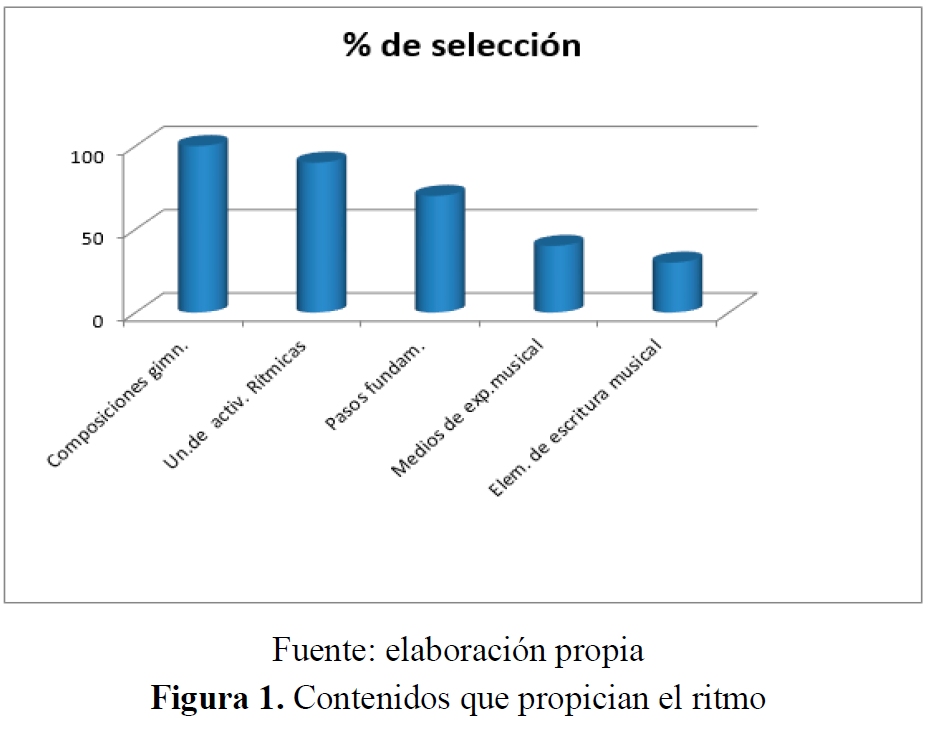Cuban's Dance for the development of the rhythm in the bachelor on Physical Culture
Main Article Content
Abstract
Starting from the contradiction that settles down among the inadequacies in the activities related with the development of the rhythm, capacity special coordinate, indispensable for the Graduate in Physical Culture, it was carried out a study that left of the diagnosis with students of first year of the Day Regular Course with the objective: to design activities with Cuban dances for the development of the rhythm in the subject Rhythmic Education and Ludic in the University of Sciences of the Physical Culture and Sport "Manuel Fajardo". For their execution they were used technical and methods: analytic synthetic, functional structural documental, systemic analysis, interviews and the chart of empiric distribution of frequency, as statistical method. The results was be able to improvement the program and contributed the design of five activities with Cuban dances in correspondence with the contents to locate in the different parts of the class.
Downloads
Article Details

This work is licensed under a Creative Commons Attribution-NonCommercial 4.0 International License.
Those authors who have publications with this journal, accept the following terms of the license Attribution-NonCommercial 4.0 International (CC BY-NC 4.0):
You are free to:
Share — copy and redistribute the material in any medium or format
Adapt — remix, transform, and build upon the material
The licensor cannot revoke these freedoms as long as you follow the license terms.
Under the following terms:
Attribution — You must give appropriate credit, provide a link to the license, and indicate if changes were made. You may do so in any reasonable manner, but not in any way that suggests the licensor endorses you or your use.
NonCommercial — You may not use the material for commercial purposes.
No additional restrictions — You may not apply legal terms or technological measures that legally restrict others from doing anything the license permits.
Notices:
You do not have to comply with the license for elements of the material in the public domain or where your use is permitted by an applicable exception or limitation.
No warranties are given. The license may not give you all of the permissions necessary for your intended use. For example, other rights such as publicity, privacy, or moral rights may limit how you use the material.
References
Álvarez,Y. (2016) Juegos didácticos para la estimulación de la creatividad motriz de los estudiantes de primer año de la Universidad de Ciencias de la Cultura Física y el Deporte.Tesis inédita en opción al título académico de Máster en Didáctica de la Educación Física Contemporánea. Universidad de Ciencias de la Cultura Física y el Deporte “Manuel Fajardo”, La Habana, Cuba.
Balbuena, G, y Chao, G. (2010).Apuntes para la enseñanza de las danzas cubanas. Historia y Metodología. Ciudad de la Habana, Cuba: Dagio
Collazo, A. (2006). Teoría y metodología del entrenamiento Deportivo. Sao Paulo, Brasil: Editorial Ícone
Guerra, R. (2003).Apreciación de la danza. Ciudad de La Habana, Cuba: Letras Cubanas.
López, J. (2010). Unidad didáctica “Danzas del mundo” EmasF, Recuperado de http://www. EmasF. Com. ISSN: 1989-8304
Pérez, S. (2012) El papel de la educación rítmica en la escuela primaria: un estudio desde la perspectiva del alumnado. Revista Electrónica de LEEME (Lista Europea Electrónica de Música en la Educación)pp. 21-42 http://musica.rediris.es/leeme ISSN: 1575-9563
Santos,C. y Armas, N. (2002). Danzas Populares Tradicionales Cubanas. La Habana, Cuba: Centro de Investigación y Desarrollo de la Cultura Cubana.
Sánchez, N. (2019) Juegos con bailes cubanos para la asignatura Educación Rítmica Y Lúdica. Congreso internacional de Actividad Física y Deporte. Afide 2019.CD Memorias del evento. INDER. Cuba. ISBN: 978-959-203-237-8

